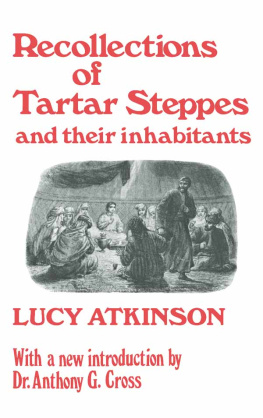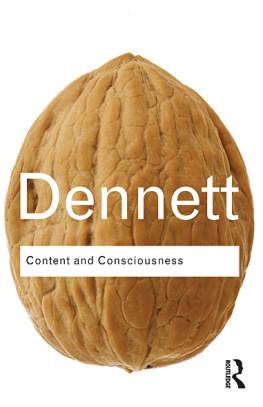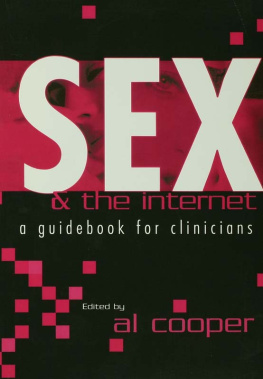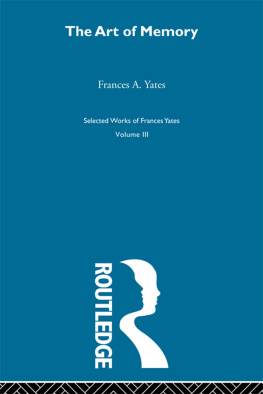RUSSIA THROUGH EUROPEAN EYES
No. 14
General Editor: Dr. A. G. CROSS, University of East Anglia
RECOLLECTIONS OF TARTAR STEPPES AND THEIR INHABITANTS
RUSSIA THROUGH EUROPEAN EYES
No. 1. John Perry
The State of Russia under the Present Czar (1716)
New Impression
No. 2. Friedrich Christian Weber
The Present State of Russia (17221723)
New Impression
No. 3. Patrick Gordon
Passages from The Diary of General Patrick Gordon of Auchleuchries in the Years 16351699 (1859)
New Impression
No. 4. Baron von Haxthausen
The Russian Empire, its People, Institutions, and Resources (1856)
Translated by Robert Farie
New Impression
No. 5. William Richardson
Anecdotes of the Russian Empire (1784)
New Impression
No. 6. J. Hamel
England and Russia; comprising the Voyages of John Tradescant the Elder, Sir Hugh Willoughby, Richard Chancellor, Nelson, and Others, to the White Sea etc. (1854)
New Impression
No. 7. C. H. von Manstein
Contemporary Memoirs of Russia from the Year 1727 to 1744 (1770; 2nd ed. 1856)
New Impression
No. 8. Johann-Georg Korb
Diary of an Austrian Secretary of Legation at the Court of Czar Peter the Great (1863)
New Impression
No. 9. P. H. Bruce
Memoirs of Peter Henry Bruce, Esq., a Military Officer in the Services of Prussia, Russia, and Great Britain (1782)
New Impression
No. 10. C. H. Pearson
Russia (1859)
New Impression
RECOLLECTIONS
OF
TARTAR STEPPES
AND
THEIR INHABITANTS
BY
LUCY ATKINSON
With a new Introduction by
DR. A. G. CROSS
School of European Studies, University of East Anglia
Published by
Routledge
2 Park Square, Milton Park,
Abingdon, Oxon, OX14 4RN
270 Madison Ave, New York NY 10016
Transferred to Digital Printing 2007
| First edition | 1863 |
| New impression | 1972 |
New introduction Copyright 1971 Dr. A. G. Cross
ISBN 0-7146-1531-5
Cover Design by Jeanne Balogun
Publisher's Note
The publisher has gone to great lengths to ensure the quality of this reprint but points out that some imperfections in the original may be apparent
INTRODUCTION TO THE SECOND EDITION
The Testament of a Forgotten Wife
In his tale The Lady turned Peasant (Baryshnya-krest'yanka) Alexander Pushkin gives a vivid cameo of his heroine's English governess, Miss Jackson, a prim forty-year-old spinster, who whitened her face and blackened her eyebrows, re-read Pamela twice a year, and was dying of boredom in this barbarous Russia. A century earlier, in the reign of Anna Ivanovna, Mrs. Elizabeth Justice, the governess to an English merchant's family in the Russian capital, did in fact rail against the country in similar terms and while away the long hours, reading The Spectator and writing those letters to a friend, the publication of which made her the first English authoress on Russia. In the age of Catherine the Great, when Anglomania became the distinguishing mark of a still admittedly small proportion of the Petersburg aristocracy, English governesses, maids and housekeepers were in demand among Russian families, and by the time of Pushkin had become well established figures on the social scene. Several of Pushkin's friends had had English governesses and shortly after his return to Moscow from exile in 1826 he may possibly have made the acquaintance of a governess who was in all but her social position so very different from the Miss Jackson he was to portray a few years later. Claire Clairmont, Byron's one-time mistress and mother of his daughter Allegra, came to Moscow with a Russian family in the spring of 1824 and remained until May 1828, entering in her journals, which have only recently been published, details of her reading and activities. Claire was in Moscow when news came of the abortive rising by the Decembrists in St. Petersburg at the end of 1825 and it is the recording of that event in her diary and her years as a governess which, rather than any other similarities in character or biography, connect her with Lucy Atkinson, the author of Reminiscences of Tartar Steppes and their Inhabitants.
Lucy, whose maiden name has not been established, came to Russia at the end of the 1830s and lived for eight years in St. Petersburg as governess to the only daughter of a General Murav'yov (a relative of either the Murav'yovs or of their distant relations, the Murav'yov-Apostols, who were leading figures in the Decembrist revolt), with whom she had often talked about those in exile whom I shall now visit, carrying many a token to prove that even after so long an absence they have not been forgotten (p.4). It was sometime in 1846 that she met in St. Petersburg the English architect and painter Thomas Witlam Atkinson (17991861), whom she was to marry at the end of the following year; between 1848 and 1853 she accompanied her husband on extensive travels through Siberia, south to the Kirghiz steppes and eastwards as far as Irkutsk and the Chinese border, before returning to England in 1854. The record of her journey was published in 1863, two years after her husband's death and three years after the publication of the second of his own two travel accounts. Apart from the fact that in 1863 she was awarded a civil list pension of 100 per annum, nothing further is known about her subsequent life in England. She has been relegated to the secondary position she herself invited in signing her book simply Mrs. Atkinson, the wife of a more famous but in so many ways less attractive and certainly less trustworthy author.
Atkinson was, nevertheless, a remarkable and resourceful man. An orphan from an early age and deprived of any formal education, he worked as a labourer and quarryman and eventually became a skilled stone-carver and self-taught draughtsman. His twin skills and interests led to a first book which appeared in 1829 under the title Gothic Ornaments selected from different cathedrals and churches in England. By this time he had established himself as an architect in London and in the course of the next ten years executed a number of commissions in London and in Manchester, principally churches and other public buildings. In 1842 he went to Germany. first to Hamburg and then to Berlin. It was probably in Berlin that he made the acquaintance of the famed German naturalist and traveller Alexander von Humboldt, who recounted his experiences and travels in Siberia and suggested to Atkinson a new outlet for his talents and energies. Abandoning his career as an architect, Atkinson took himself to Russia to travel through Siberia and sketch its scenery, scarcely at all known to Europeans. He realized that his projected journey would be impossible if he were held to the normal passport regulations which obtained within Russia and his direct approach to the Emperor, Nicholas I, was rewarded with what was virtually a free pass which enabled me to cross the frontier, as well as to re-enter the Empire at any points to which my rambles might lead me. In the course of seven years' travels he was to cover some thirty-nine thousand miles, keeping diaries and endlessly sketching and painting. On his return to England he became something of a celebrity, firstly by the excellence and unusual subject-matter of his watercolours and secondly by the publication of his books, both of which were lavishly illustrated.







